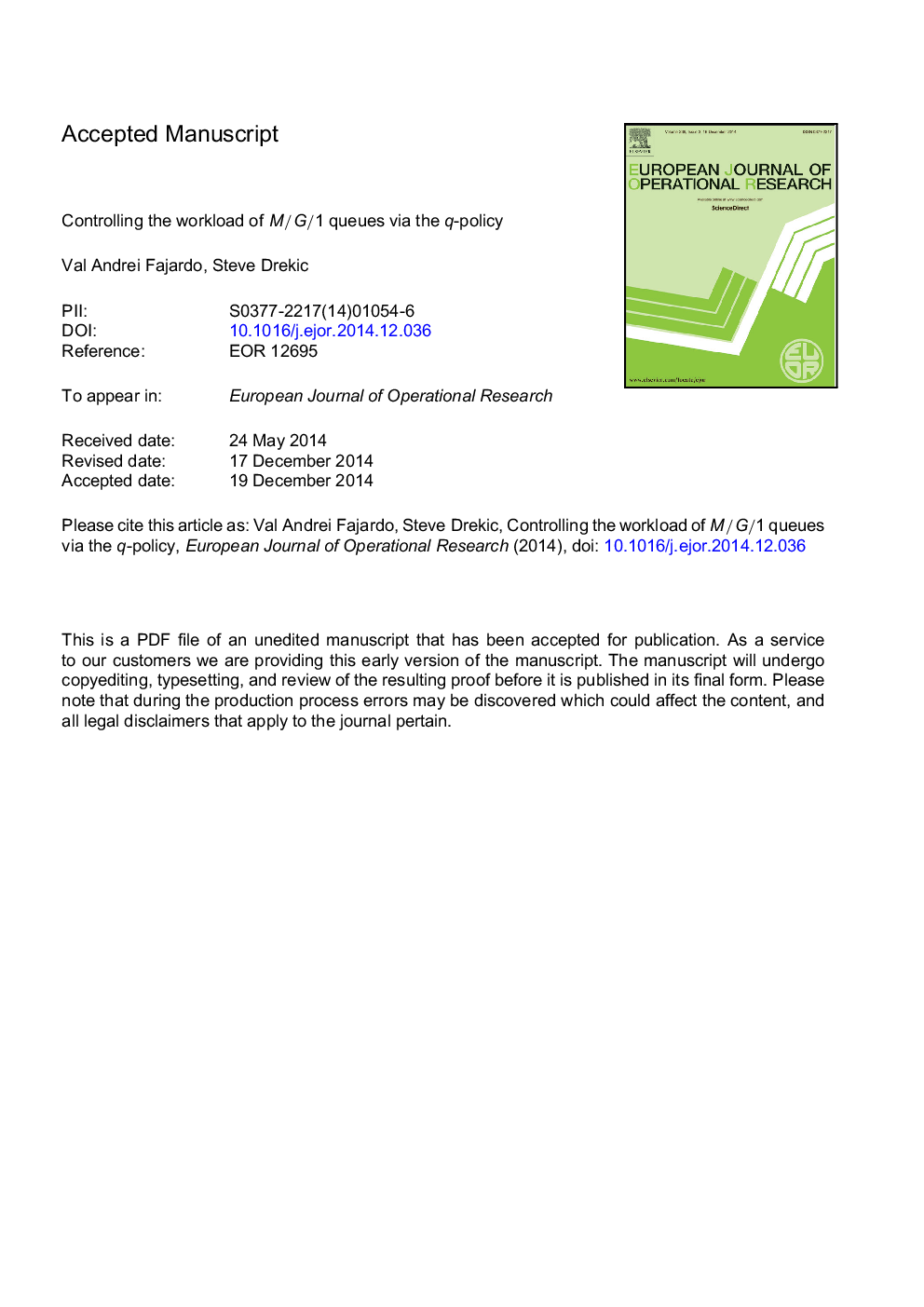| Article ID | Journal | Published Year | Pages | File Type |
|---|---|---|---|---|
| 6896828 | European Journal of Operational Research | 2015 | 32 Pages |
Abstract
We consider a single-server queueing system with Poisson arrivals and generally distributed service times. To systematically control the workload of the queue, we define for each busy period an associated timer process, {R(t), t ⥠0}, where R(t) represents the time remaining before the system is closed to potential arrivals. The process {R(t), t ⥠0} is similar to the well-known workload process, in that it decreases at unit rate and consists of up-jumps at the arrival instants of admitted customers. However, if X represents the service requirement of an admitted customer, then the magnitude of the up-jump for the timer process occurring at the arrival instant of this customer is (1 â q)X for a fixed q â [0, 1]. Consequently, there will be an instant in time within the busy period when the timer process hits level zero, at which point the system immediately closes and will remain closed until the end of the current busy period. We refer to this particular blocking policy as the q-policy. In this paper, we employ a level crossing analysis to derive the Laplace-Stieltjes transform (LST) of the steady-state waiting time distribution of serviceable customers. We conclude the paper with a numerical example which shows that controlling arrivals in this fashion can be beneficial.
Keywords
Related Topics
Physical Sciences and Engineering
Computer Science
Computer Science (General)
Authors
Val Andrei Fajardo, Steve Drekic,
